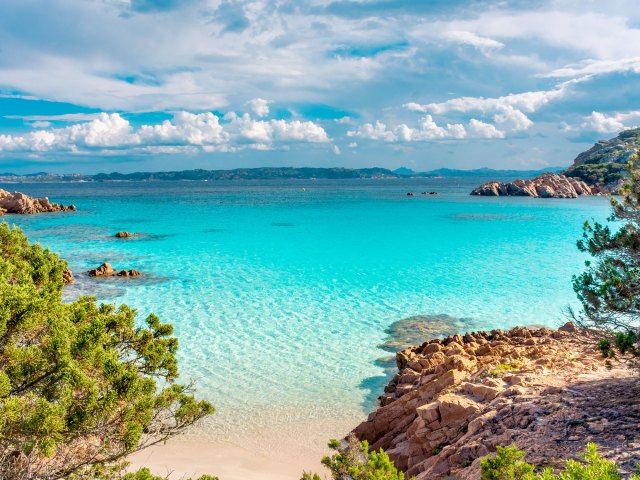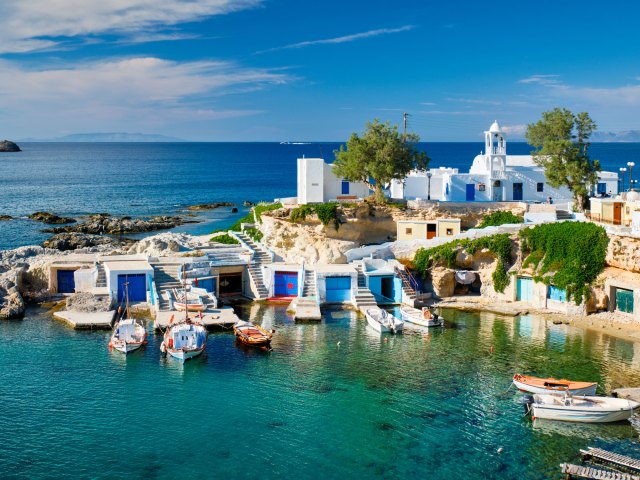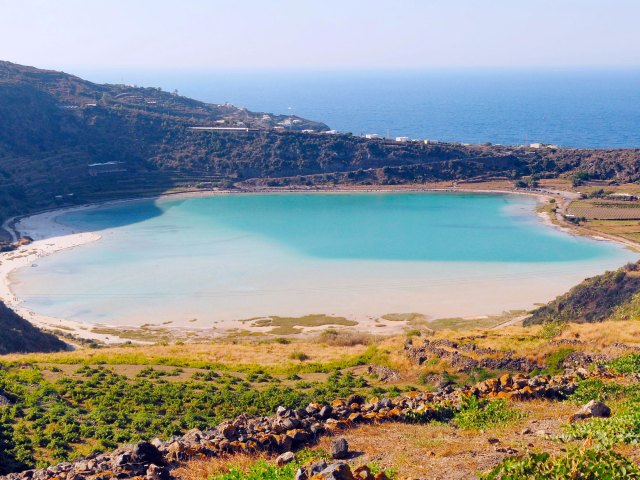You may be familiar with the likes of Ibiza, Santorini, Sicily, and Cyprus, but they are just a handful of the over 150 islands found in the Mediterranean Sea. And while the largest islands such as these have already made names for themselves as tourist hot spots, there are still quite a few unique Mediterranean Islands that have managed to fly under-the-radar, despite their distinctive geographical features and interesting histories. From islands that are home to pink sand beaches to ones with caves frequented by pirates, these are three under-the-radar Mediterranean Islands to know about.
Budelli – Italy

From Spain to Egypt, golden sand beaches line the vast majority of the Mediterranean — but there are a handful of pink sand beaches hidden amongst them. Spiaggia Rosa, which translates to “pink beach” in Italian, gets its stunning pink hue from a microorganism called Miniacina miniacea. These naturally reddish and pinkish foraminifera (or single-celled organisms with shells) are actually common all around in the Mediterranean but particularly in the waters near Budelli.
From the 1970s into the early 1990s, tour boats would take visitors to this uniquely colored beach. Unfortunately, many of these tourists would take some of the pink sand home, and the shoreline quickly became less and less pink. In the 1990s, the government closed off access to Spiaggia Rosa to preserve the pink sand that remained and give nature a chance to create some more. Until 2021, the only person who could access the beach was a man named Mauro Morandi, the island’s unofficial caretaker.
Today, Spiaggia Rosa remains completely untouched, and the only way to see this pink sand beach is by sailing past it. Through these precautionary measures, Spiaggia Rosa will remain pretty-in-pink for years to come.
Milos – Greece

Swashbuckling pirates sailed their way around the Mediterranean for thousands of years, so it should come as no surprise to find out that there were once pirate hotspots all around South Europe and North Africa. And a particularly popular pirate homebase was the island of Milos, Greece.
Milos is home to an eye-catching landscape of turquoise waters and waterfront white cliffs filled with caves. These hidden caverns were prime locations for pirates from all around the region — including Venetian, Corsican, Berber, and Saracen pirates — to set up their ambushes against trade vessels from at least the fifth century BCE to around the 15th century.
While there were quite a few cave areas that the pirates used as their homebase, Kleftiko Bay was a favorite, thanks to the ideal cave positions. It was easy enough for pirates to hide away here, often for days on end, until the perfect moment presented itself. Then, they would plunder unsuspecting merchant ships for valuable goods. Fortunately, Milos’ caves are no longer filled with gold-hungry pirates. Thanks to strong government policies, piracy in the Mediterranean officially came to an end in the 19th century, and today the island makes for a scenic (and historic) under-the-radar Mediterranean getaway.
Pantelleria – Italy

Located in the Strait of Sicily between Italy and Tunisia, the island of Pantelleria, Italy is an architectural gem. Though constructing buildings on a remote island can be challenging, the people of Pantelleria made it work through the one-of-a-kind design of the dammusi.
Dammusi are sturdy, single-story dome homes made of rocks naturally found on Pantelleria. In the earliest buildings from the 10th century, the stones for the Arab-inspired dammusi were shaped and wedged together without using any sort of mortar (since it wasn’t readily available).
Originally, dammusi were built and used by workers who had to move from one part of the island to another, depending on what season it was and which of their crops needed to be tended to. But today, these unique buildings have gotten a status upgrade, as several wealthy vacationers (including Giorgio Armani) have purchased upgraded dammusi on Pantelleria as vacation homes.
More from our network
Daily Passport is part of Inbox Studio, which publishes content that uplifts, informs, and inspires.
















